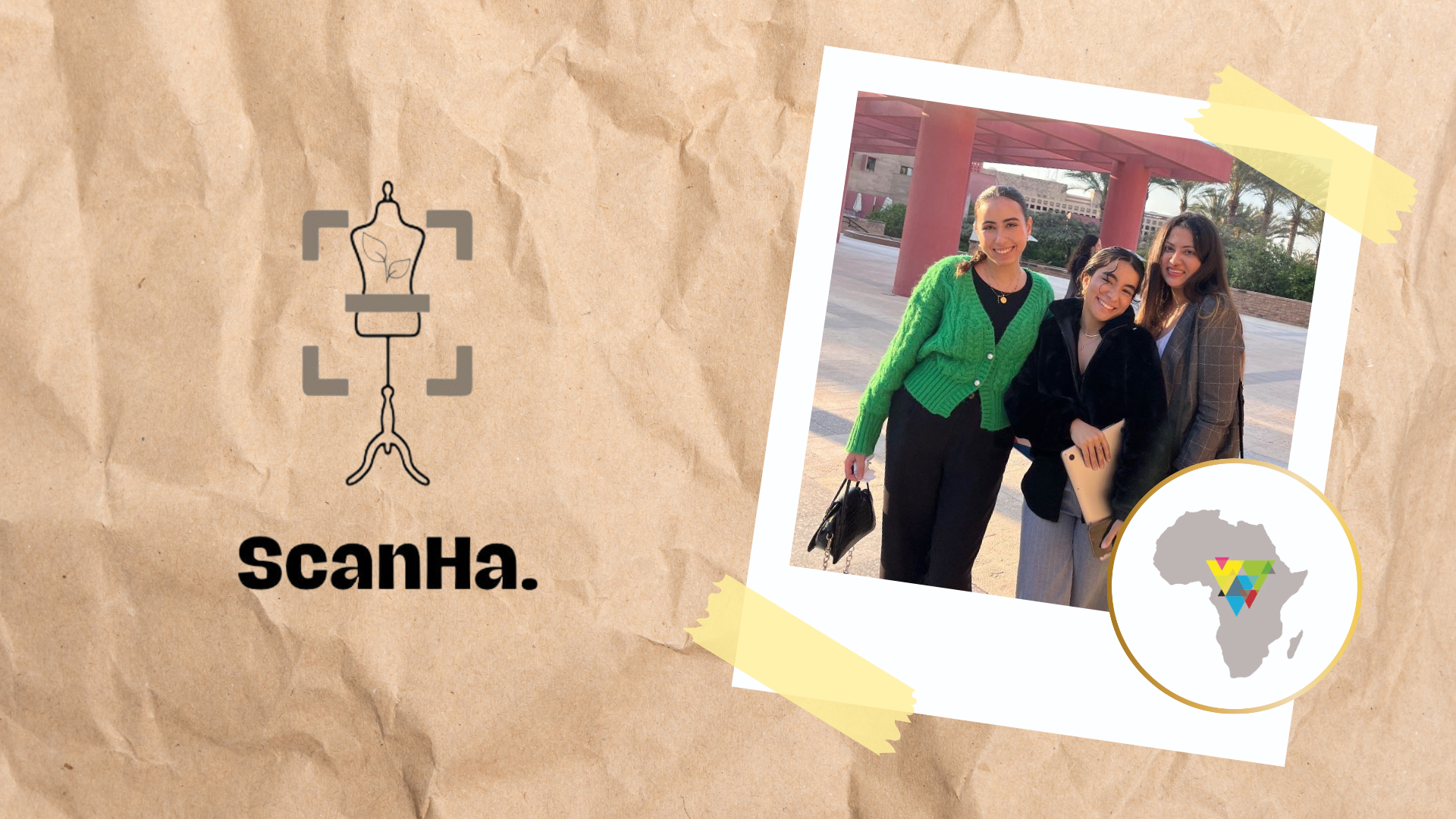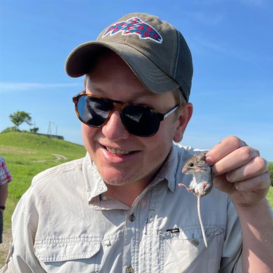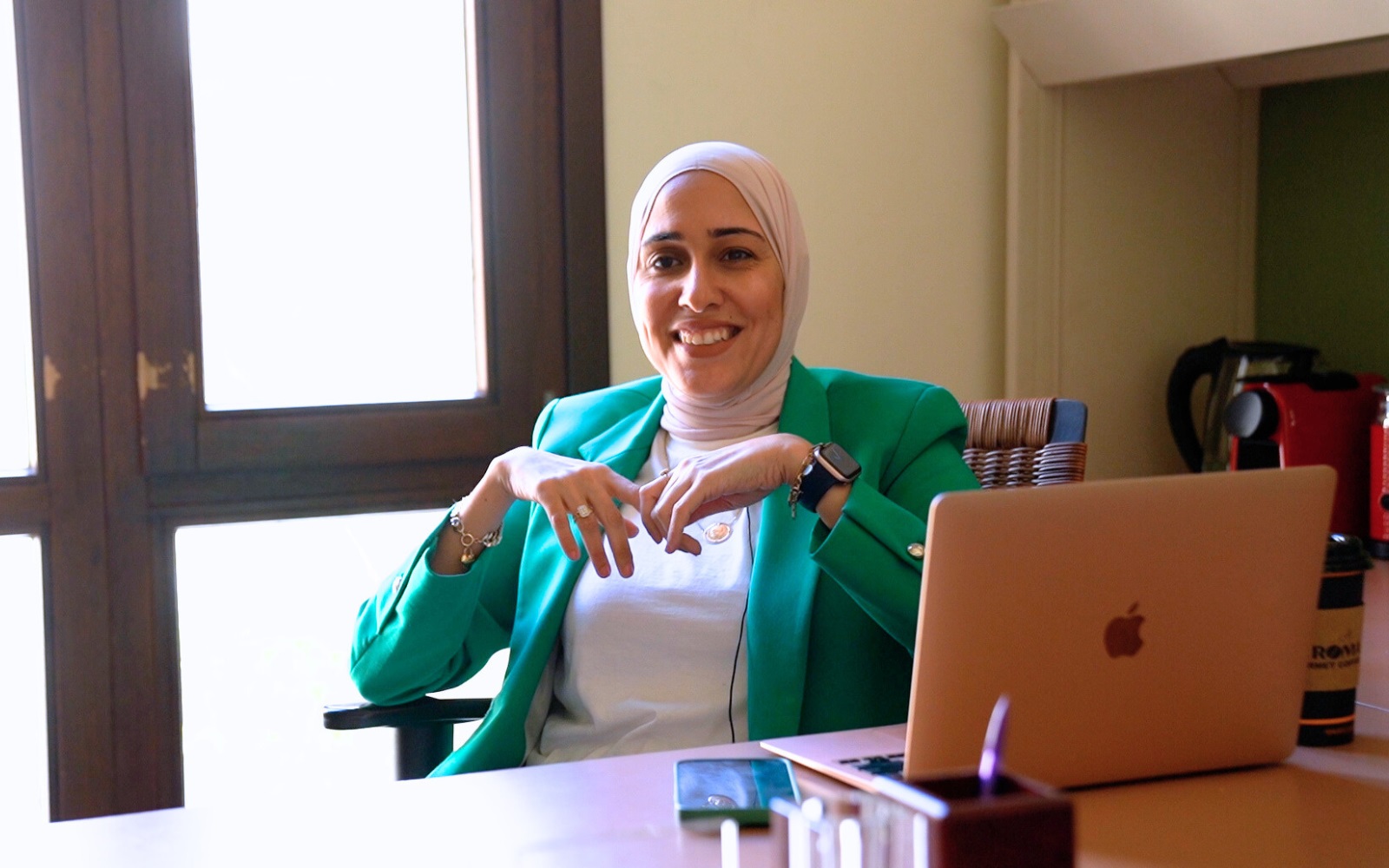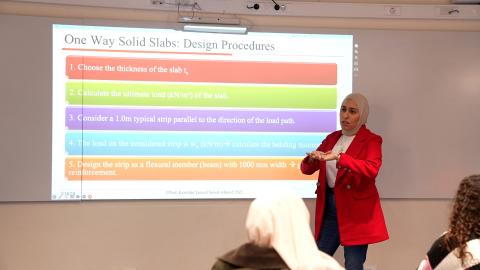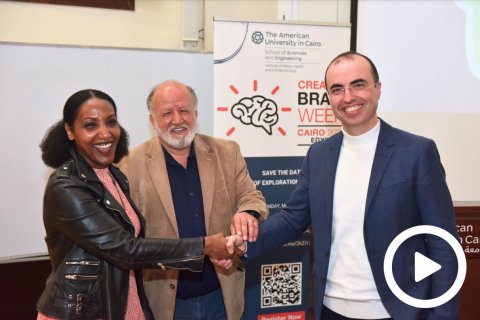AUC Students Win With Sustainable Shopping
Finance juniors Salma Afifi, Jumana Elhefnawy and Maya Abu Shahba developed ScanHa to incentivize consumers toward making sustainable fashion choices, promoting conscious consumerism and reducing the industry's environmental impact.
"We want to create a community of environmentally conscious and responsible shoppers without compromising either style or budget," explained Elhefnawy. “ScanHa allows customers to scan the barcodes of clothing items while shopping, showing a sustainability rating for each piece. For high-rated items, the user is encouraged to proceed with the purchase, whereas for low-rated items, the user is redirected toward a more sustainable yet identical alternative. ScanHa also offers incentives and discounts for eco-friendly purchases, which makes sustainable shopping more desirable and accessible.”
Offered by the Center for Entrepreneurship and Innovation at AUC’s School of Business in collaboration with the African Engineering and Technology Network (Afretec), a pan-African network that includes universities from across the continent, the competition encourages students to utilize advanced technology (ICT) in order to aid businesses and public establishments in reducing waste and advocating for ethical practices for a more sustainable future.
Competing with more than 200 participants from 14 different African countries, a team of three AUC students won the ICT for Circulatory Competition for their first-of-its-kind mobile app, ScanHa, which allows consumers to scan clothing barcodes to view sustainability ratings and recommendations for more eco-friendly alternatives.
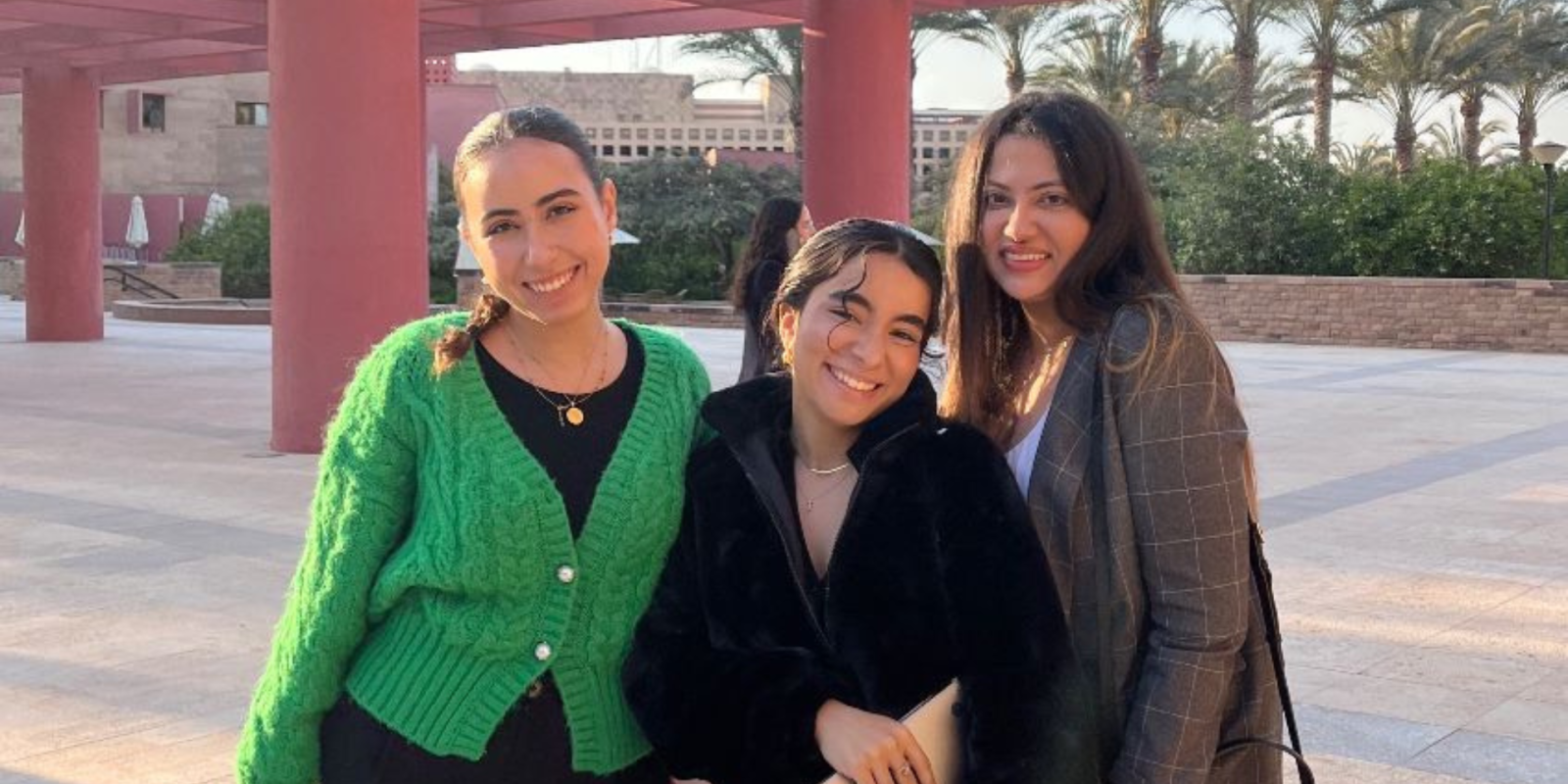
“We all love fashion, but often fail to acknowledge the effects it has on the environment and how damaging it can be."
The idea of the startup app stems from the Entrepreneurship and Innovation course offered by the Business School. The course mirrors the real-world early stage of the entrepreneurial process where students are given the chance to build a business model throughout the semester resulting in a final pitch.
“We had identified the problem of sustainability in the fashion industry early on in the course. However, we just did not know how to go about creating a solution. We first toyed with the idea of creating a fintech app, but it lacked the spark,” Afifi said, “After weeks of research and brainstorming, we landed on the idea of ScanHa.”
The app aims to shift the stigma surrounding the cost of sustainable fashion. “We all love fashion but often fail to acknowledge the effects it has on the environment and how damaging it can be,” Abu Shahba said. “We want to raise awareness by encouraging consumers to make informed decisions. Whether actively seeking sustainable choices or new to the concept, our objective is to simplify the process of sustainable purchases for the consumer to benefit both the society and the environment."

The ScanHa team credits their success in part to their educational journey at AUC< where classes allowed them to hone their pitching skills as well as their ability to identify weak points in their initial thought process to determine the viability of their project.
"Their ultimate victory in Afretec further solidified their excellence."
“Research was instrumental to our success," said Afifi. "Our idea is complex, so clarity and cohesiveness were key. Thanks to the power of research, the guidance of our professor and AUC equipping us with an extensive research base, we were able to readily and smoothly answer the Q&A section of the competition.”
Moataz Darwish '95, associate professor in the School of Business and course instructor, noted, “This team kept passionately exploring their problem space of fast fashion and persistently iterating between multiple solutions for most of the semester whilst their classmates were already finalizing their projects. Their ultimate victory in Afretec further solidified their excellence."
Darwish commended ScanHa’s team diversity. “By combining various thinking styles and personalities, they achieved a well-rounded approach that propelled them to success,” he said.

